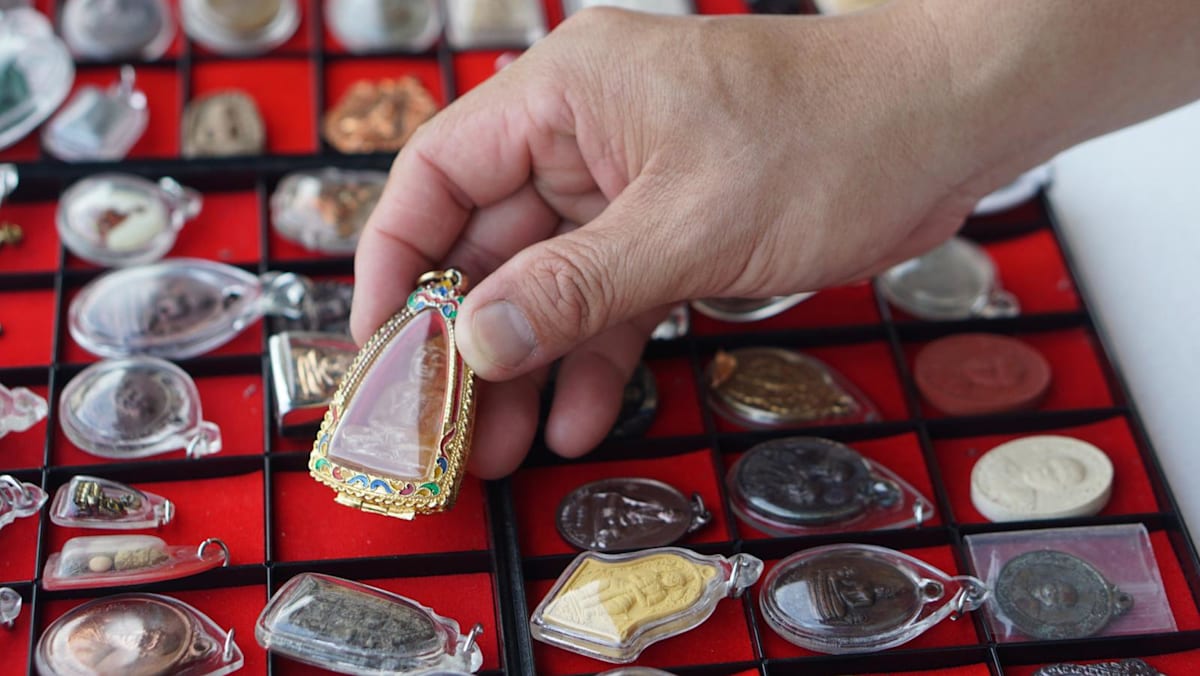SINGAPORE: An amulet collector bought six Thai amulets for more than S$64,000 (US$49,900) from a middleman, claiming she did so because they were said to be “super rare” and valuable.
However, she later sued him for false representations, saying the trinkets had little market value, were not rare and did not contain diamonds.
She was also unable to sell the amulets, with no offers since January 2024.
In a judgment made available on Friday (Sep 19), a district court dismissed the suit by Ms Chang Siew Kheng, saying she was unable to prove that the seller had made fraudulent misrepresentations.
“At the end of the day, the claimant not being able to sell the amulets at a higher price than the price she had paid for is simply a case of bad investment on her part,” said District Judge Chiah Kok Khun.
According to the judgment, Ms Chang has a keen interest in collecting and investing in amulets, while the defendant, Mr Shawn Foo, is a middleman who buys and sells amulets in Singapore.
He looks for amulets in Thailand on behalf of members of the local community of “amulet enthusiasts”.
Ms Chang bought six amulets from Mr Foo sometime in May and June 2018, paying a total sum of S$64,600 for them.
She sued Mr Foo, claiming that he had induced her to buy the amulets on “entirely false” representations that they were rare, that two of them contained real diamonds, and that they would all certainly rise in value.
In January 2024, Ms Chang said she discovered that the amulets were of little market value and had not gone up in price. They were also not rare and did not contain real diamonds, but glass, claimed Ms Chang.
She put the amulets up for sale but received no offers. One person accused her of being a scammer who was selling fake amulets.
Several Facebook users reacted with incredulity at the prices when she tried to sell them on the platform in March 2024, said Ms Chang.
She concluded that the amulets must have no value at all, since no one in the market was willing to buy them, and tried to ask Mr Foo to buy them back from her at the price she paid for them, but he declined.
Mr Foo denied that he had made false representations. He said Ms Chang had specifically asked for old and rare amulets made by a monk known as Kruba Krissana in Thailand, so he looked for the trinkets on that basis.
The judge said the key problem with Ms Chang’s case was that it was not clear what a fake amulet was.
“It is not the claimant’s position that there is a protocol for certification of amulets. There is, in fact, no evidence before me that there are certificates for amulets,” said the judge.
“Neither is there evidence of the existence of organisations that issue certificates for amulets that are recognised by amulets enthusiasts. There is also no evidence that there are certified gemologists, valuers or experts on amulet pricing.”
He said it appeared that the only way to establish the authenticity of an amulet was to do so with the particular monk who made it.
However, it was not disputed that both parties visited the temple in Thailand where the monk was based, and they met him to verify the authenticity of the amulets.
Ms Chang had not given any positive evidence that the amulets were fake, or that the monk gave any indication that he had not made the amulets, said the judge.
He said she also did not offer any definition of the rarity or collectibility of amulets, and he was unable to make any findings in this regard, as there was simply no basis to do so.
As for the contention about the diamonds, the judge noted that the “diamond-like crystals” constituted only a small part of two amulets.
Ms Chang had only produced a gemstone report for one of them, which stated that the crystals were not diamonds.
The judge said it was plain from the evidence that whether the crystals were diamonds by themselves was not material to Ms Chang’s decision to purchase the amulets.
She also did not prove that she had suffered any damage.
“If the claimant had purchased the amulets as an enthusiast to add to her collection of amulets, she still has the amulets. She suffers no loss,” said the judge.
“If she had purchased them for investment purposes, there is no evidence that her investment has diminished in value.”
He dismissed the case, noting that Ms Chang raised the issue of misrepresentation more than five years after buying the amulets.
